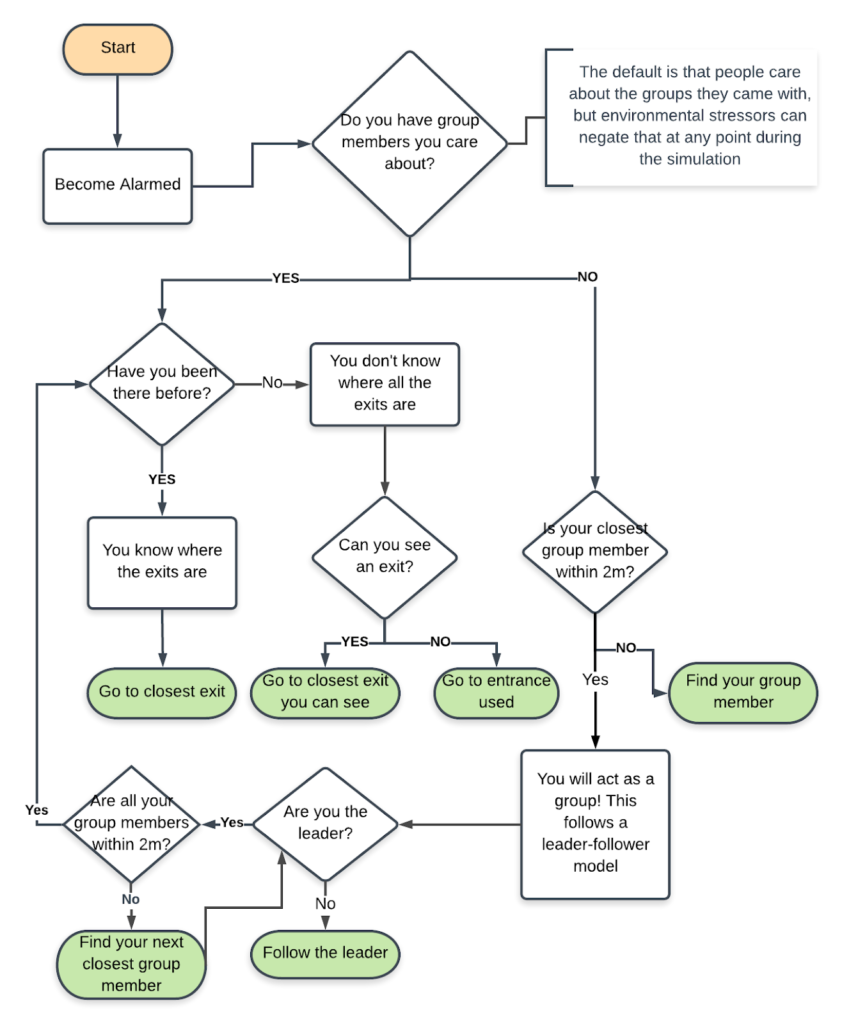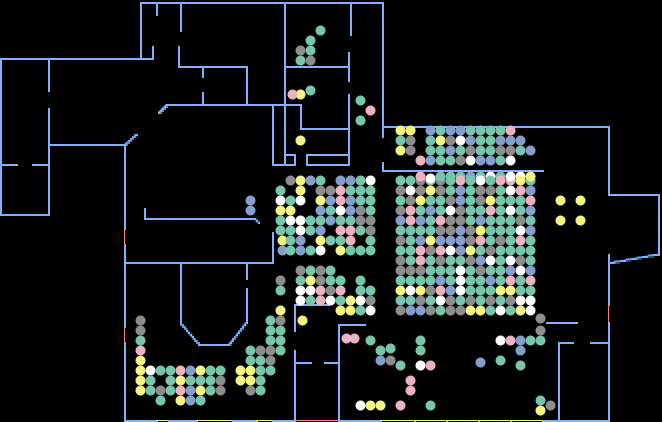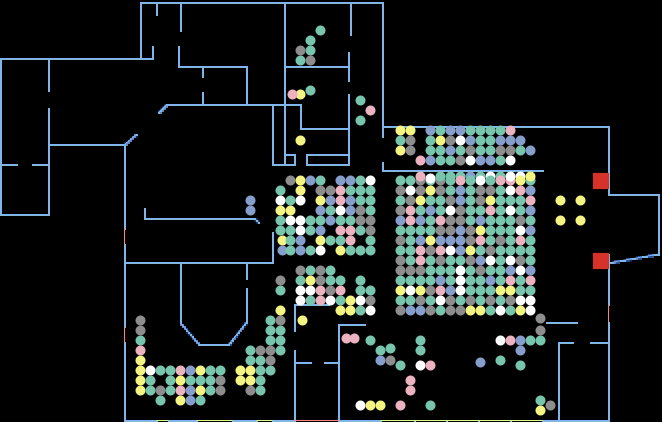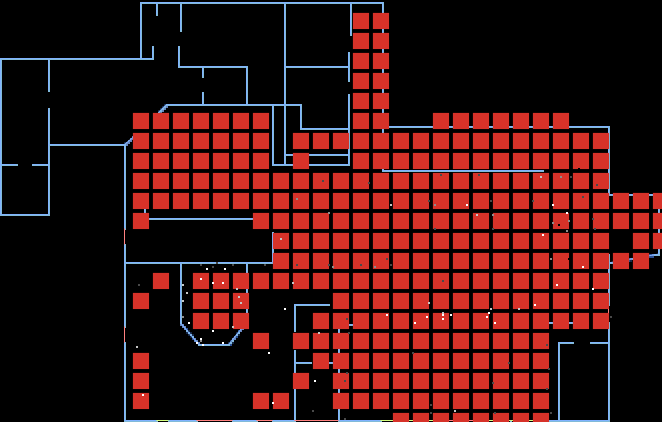Overview
SocEvac2 is an open-source program to simulate human evacuation behavior from fire, including group ties and prioritization of goals based on those ties. An agent-based model built using NetLogo, SocEvac2 is designed to model human behavior in any single building fire.
Focused on human behavior, the program takes details about people, buildings, fire, and smoke from CSVs before modeling the behavior itself.
Panic is not a factor in the priorities or behavior of agents in the fire. Social ties and the prioritization of loved ones over more rational decisions to exit immediately are considered sufficiently explanatory of the observed behavior and results of the fire.
The layout is slightly simplified in that the dance floor is represented not as raised but as the same level as everything else. The Station Nightclub fire in 2003 is the primary case study used to build SocEvac2, and will be the primary basis for validation. After calibration and validation, though, SocEvac2 will be validated using details from the Beverly Hills Supper Club fire in 1977, to demonstrate the generalizability of the code.
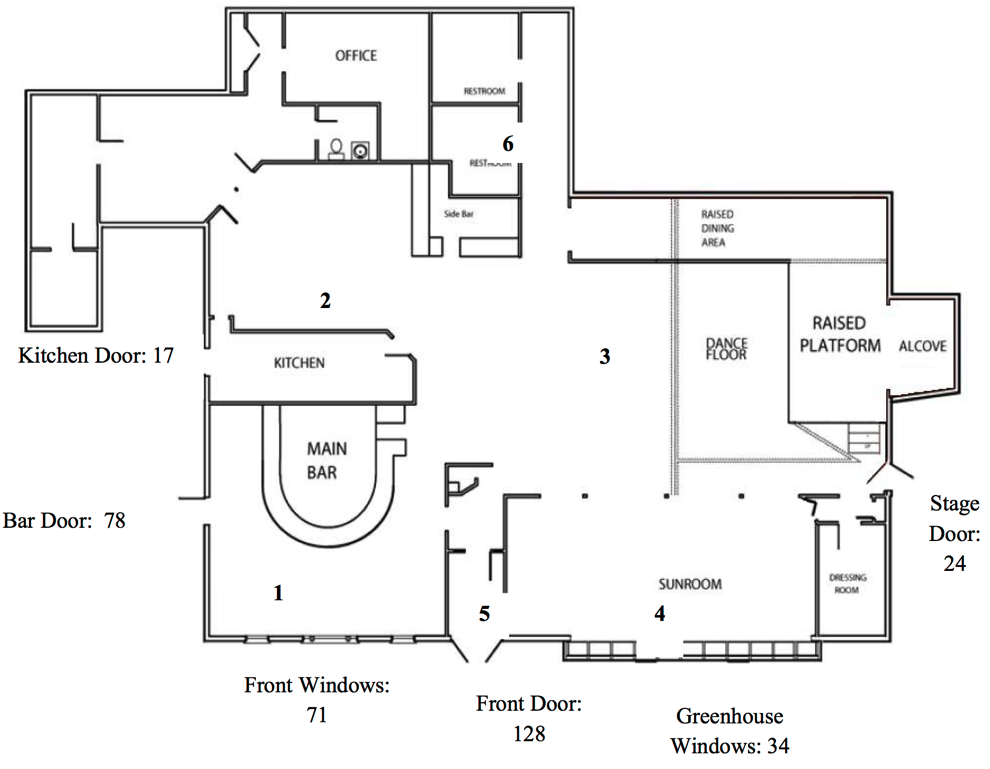
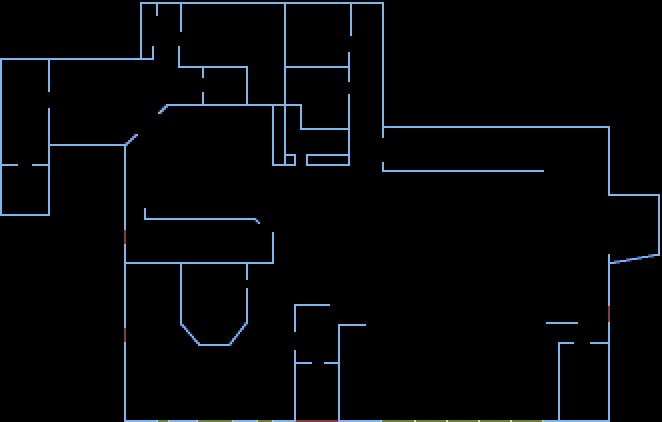
Team
Developer: Eileen Young
Undergraduate Assistant: Nathan Joseph
Downloads
See “Downloads” page: https://icor.engin.umich.edu/downloads/
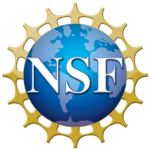
This project is supported by the United States National Science Foundation (NSF) through grant 1638186 (CRISP Type 2: Interdependencies in Community Resilience (ICoR): A Simulation Framework). Any opinions, findings, conclusions, and recommendations expressed on this site are those of the project team members and do not necessarily reflect the views of the NSF.


